A walking boot, also known as a walking cast, is prescribed after ankle, foot, or lower leg injuries, and sometimes post-surgery. Its primary purpose is to immobilize the injured area while allowing some mobility, aiding in faster healing. Offering more stability than a traditional cast, it helps protect the injury and can potentially prevent the need for surgery. Proper use ensures optimal recovery.
If you’re using a medical walking boot, you probably had a toe or foot surgery or currently suffer from a serious leg or foot injury.
These boots are essential for healing.
Even so, the transition from walking boots to normal shoes is an equally important process.
No matter how healed you think you are, you cannot simply wear your regular shoes after a certain number of weeks.
Only your physical therapist can tell you can when you can move on from the walking boot to a regular shoe.
Here, we aim to help you understand how to begin the transition process, what it entails, and what you need to keep in mind to have an injury-free and safe transition.
What Is a Walking Boot?
A walking boot also called a walking cast, is recommended by doctors or physical therapists following ankle, foot, and lower leg injuries.
In some cases, it may also be used after surgery.
Its main purpose is to immobilize the ankle and leg when moving around or walking.
The goal is to help in healing post-surgery or simply avoid the surgery in the first place.
Walking boots are primarily recommended by health professionals, as they provide you with more stability than a traditional cast.
It helps in keeping you as mobile as possible while protecting your injury at the same time.
The walking boot is strapped to the injured leg. This will aid in immobilizing it to help accelerate proper healing.
Wear your walking boot the right way for your foot injury to heal properly and as quickly as possible.
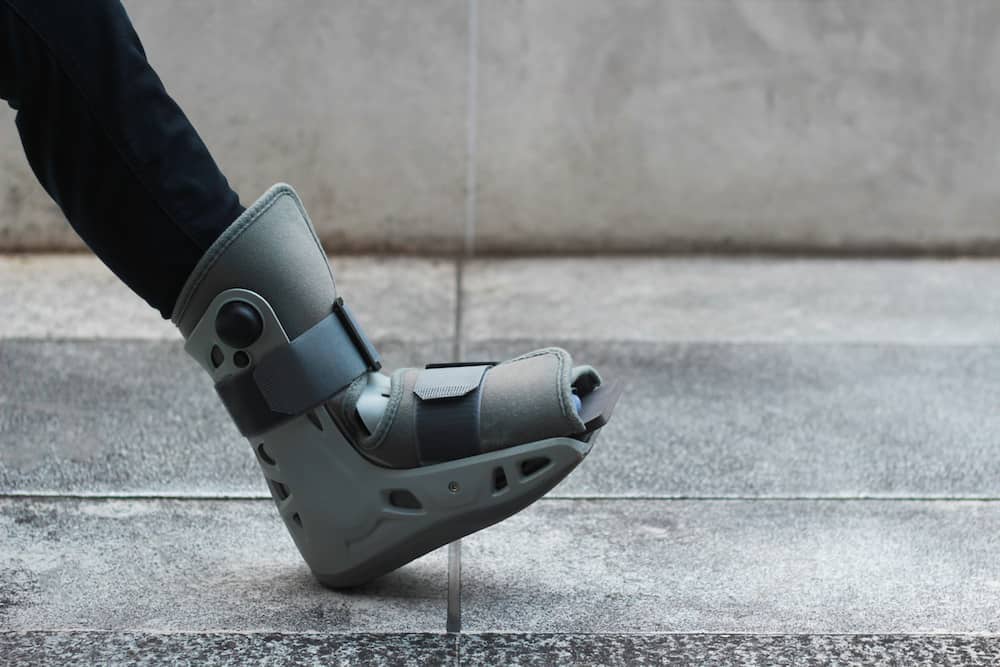
Transition From Walking Boot to Normal Shoe
As exciting as it may be to finally get rid of the walking boot, the last thing you need is another foot injury.
Everyone who has ever been in your situation was tempted to resume their daily activities as quickly as they can.
However, you have to understand that your foot may probably need more time since it is vulnerable and more sensitive than usual.
Take things slow and follow the steps we laid out below to get back to normal safely and quickly.
How Do You Transition From Walking Boots to Shoes?
You may have been wearing your walker boots anywhere between a month to three months.
This means you will be eager to get back to your regular self and do things you love, like dancing, running, or simply just being able to walk normally.
However, transitioning out of walking boots is not that easy; there is a lot of work yet to come.
Physical Therapy
Once you start the process of transitioning out of the walking boot, you will then have to begin two to three months of rehabilitation.
The main purpose of rehabilitation is to restore strength and motion in your foot and ankle.
The first step in your rehabilitation journey is physical therapy.
You will typically start with non-weight-bearing range of motion exercises, like resistance band exercises, ankle circles, calf stretching, and more.
Your program’s difficulty will increase significantly once your physical therapist clears you to remove the walking boot.
At this point, there may be partial weight-bearing or full weight-bearing of the boot in an orthotic shoe or lace-up ankle brace.
If the X-ray looks fine, your therapist may even recommend a full weight-bearing status in a normal shoe.
Keep in mind that every person and their injury is different.
Hence, follow your physical therapist’s advice perfectly when it comes to weight-bearing status.
Importance of Exercises for Better Recovery
After having full weight-bearing status, you can further improve your balance by performing appropriate exercises.
These can include simple exercises, like standing with your feet together and your eyes closed.
You can even try standing with one foot in front of the other to train the receptors in the ankle joint.
These are just two examples of the many balance exercises that can aid you in restoring ankle function.
Additionally, you will begin to feel stronger in your calf muscles since you will be walking and doing heel raises.
If you are unsure about which exercises you should be doing, don’t hesitate to consult your physical therapist for more personalized recommendations.
It is also important that you don’t push yourself more than you can, as that may end up causing more injury.
Possible Pain
With all these exercises, you will improve your ankle strength and range of motion.
However, there is also a high possibility that you will experience more pain.
As you transition to the normal shoe, there will be increased demand on your foot and ankle. And this may cause pain.
Do not be anxious about this pain. It is quite normal to experience more pain during this phase.
The pain will subside and get better with exercises, time, proper supplementation, good nutrition, and moderation of your activity levels.
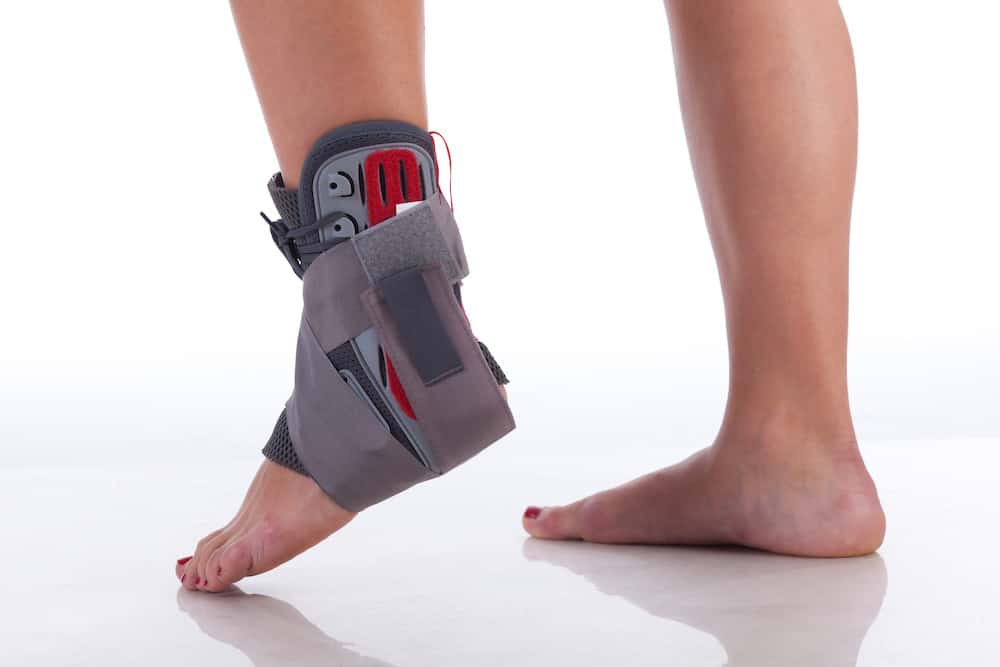
Wearing Ankle Brace After Walking Boot
Most walker boots provide great support following operations or injuries to the foot, ligaments, and ankle.
When transitioning out of a walking boot, using an ankle brace will provide you with more movement while still taking most of the weight away from your injury.
Using an ankle brace after walking boots is important when you want to start walking again or want to get back to the sport you love.
This will make the transition process a little easier and go a little smoother.
How Long Does It Take To Wean Out of a Walking Boot?
Once you get to full weight-bearing status, it is time to wean out of the walking boot.
This means you can now allow more stress to the affected area. This is done by gradually adding stress.
As a patient, you are initially allowed to come out of the boot for an hour in the morning and an hour in the afternoon.
Whichever hours you choose, make sure they are not the busiest.
Even though it is just for an hour with minimal activity, the fact that you are getting out of the walking boot will add stress to the affected area.
The boot weaning duration can differ based on the severity of the injury and how well your leg can recover.
Only a health professional familiar with your case can determine this protocol duration.
Here’s an example of a boot-weaning protocol for six weeks for you to get an idea of what it entails:
Boot Weaning Protocol (Six Weeks)
Ensure you follow this schedule to wean from the walking boot over the next six weeks.
Ideally, wear a pair of supportive and protective shoes, like athletic or hiking boots.
If you experience increased pain over a two-day period, slow down your progression and wait for a few days before advancing to the next stage.
You should wean out of a walking boot only after you are fully weight-bearing and not at the same time.
- Days 1 to 10
Remove the walking boot for an hour in the morning and an hour in the afternoon.
- Days 11 to 21
Remove the walking boot for two hours in the morning and two hours in the afternoon.
- Days 22 to 33
Remove the walking boot for three hours in the morning and three hours in the afternoon.
- Days 34 to 42
Remove the walking boot for four hours in the morning and four hours in the afternoon.
- 7th Week Onwards
Remove the walking boot completely.

What To Expect When Walking Boot Comes Off?
It is natural for your foot to feel a little strange after removing your walking boot, especially after wearing it for months.
Apart from looking wrinkled and a bit pale, there is a high chance your foot may even be swollen and stiffer than usual.
Once you remove the walking boot, you will instantly feel lighter and find it much easier to maneuver.
To gain a more in-depth look at what would happen after you remove it, here are more detailed descriptions.
Skin
After taking off the walking boot, the first thing you will notice is your skin under it.
The skin here will be far more sensitive than usual, which means you have to be extremely gentle with it for about a week.
This includes resisting the urge to scratch the itch no matter how tempting it may be.
Doing so can damage the skin easily, possibly even break it, and all of this will further put you at risk of developing an infection.
We recommend giving yourself a foot bath with lukewarm water (not hot) twice a day for 20 minutes.
Do this for at least a week after the boot is off. Make sure you are gently patting your skin dry with a towel afterward.
There may be a possibility that the skin on your foot may appear red.
In such cases, you can take a towel soaked in cold water for about 10 minutes and wrap it around your feet for some time.
After your feet are completely dry, apply moisturizer to the affected area liberally.
The moisturizer you use must be pH-balanced and free from any artificial scents. Scented moisturizers 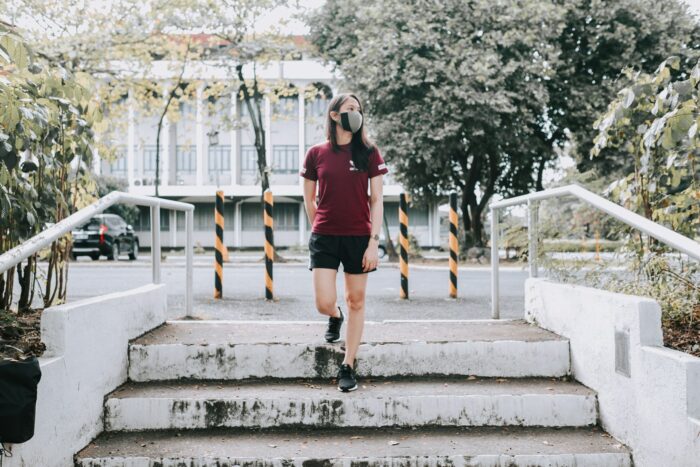 tend to have certain ingredients that can irritate the skin.
tend to have certain ingredients that can irritate the skin.
Hair
You may notice that the hair on the affected area appears much darker and thicker than the hair on the rest of your leg.
Do not be alarmed looking at this, as it is completely normal. It will most likely disappear naturally over a few days.
The hair will experience a greater amount of friction than it did while you wore the walking boot.
If you want to shave your legs, make sure you don’t do it when your skin still feels sensitive.
As mentioned, the sensitivity can take up to a week to fully go.
Shaving your hair while it’s still sensitive can make it very likely that you cut your skin. This, in turn, can greatly increase your risk of infection.
Types of Injuries that May Require a Walking Boot
Walking boots can be valuable aids for managing foot pain, injury, or post-operative recovery. They relieve pain, immobilize the injured or sensitive area, and stabilize the foot.
Here are some of the most common foot injuries and surgeries requiring the use of walking boots: –
Moderate to Severe Ankle Sprains
Walking boots can stabilize and support the foot as it heals from a moderate or severe ankle sprain. By immobilizing the foot, walking boots protect the torn or stretched ligaments.
Likewise, its minimal cushioning relieves pain from accidental contact, inflammation, and swelling. And its gradual weight-bearing accelerates the healing process.
Fractures
Walking boots are effective recovery aids for healing from such injuries as a tibial plateau and calcaneal fracture.
They restrict movement to facilitate proper alignment of the fractured bones. Also, they shield the injured bones from external pressure while gently compressing them to minimize swelling.
Achilles Tendon
Repetitive stress to the Achilles’ tendons can result in painful inflammation and limit running, walking, or jumping workouts.
Doctors may recommend using walking boots when recovering from an Achilles Tendon repair surgery.
Walking boots help by minimizing strain and supporting the ankle area during the initial phase of the recovery. Its in-built heel lifts the ankle area to divert tension from the Achilles’ tendons and facilitate optimal healing.
Plantar Fasciitis
Doctors may require the use of walking boots when managing severe plantar fasciitis. The boot immobilizes the foot and ankle to relieve pressure on the plantar fascia for faster healing.
Further, its cushioned insoles redistribute pressure away from the sensitive areas to minimize pain and discomfort associated with the injury.
Midfoot Injuries
Recovery from Lisfranc injury and other midfoot fractures and ligament tears may require the use of walking boots.
Here, the boots restrict movement of the midfoot joint to alleviate pain and promote healing.
Further, the boots have inserts for offloading pressure away from the injured midfoot area while acting as a stable platform as you gradually transition to regular activities.
Overall Weakness
Regardless of the extent of your foot injury, you are most definitely going to experience weakness in your foot after spending so many weeks in the walking boot.
This means you should make it a point to return to your normal level of activity only gradually.
Take things slowly, with easy steps at first, and support yourself as much as possible.
As time goes by and the number of exercises you perform, your foot will begin to heal.
Eventually, you will begin to put more weight on that foot until you start to feel improvement.
Conclusion
To transition from walking boots to normal shoes and into your old routines safely, you have to follow a strict set of rules.
Keep in mind that healing takes a lot of time.
With the correct implementation of a physical therapy program, along with proper nutrition and supplementation, you will be well on your way to living a regular, pain-free life again.
You might even be able to get back to running again soon if you follow your physical therapist’s professional advice to the T.

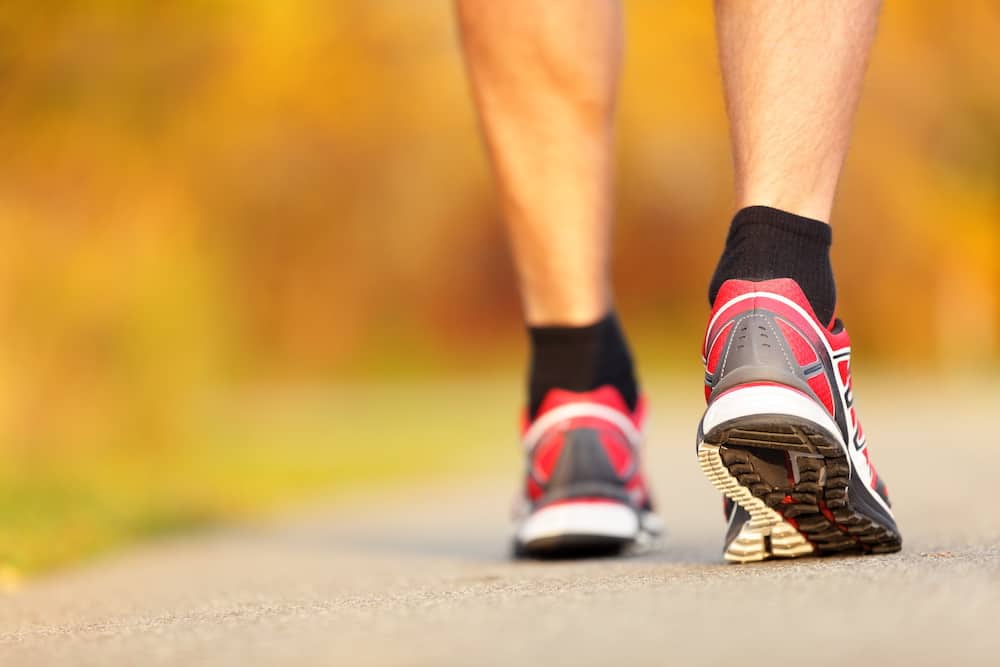
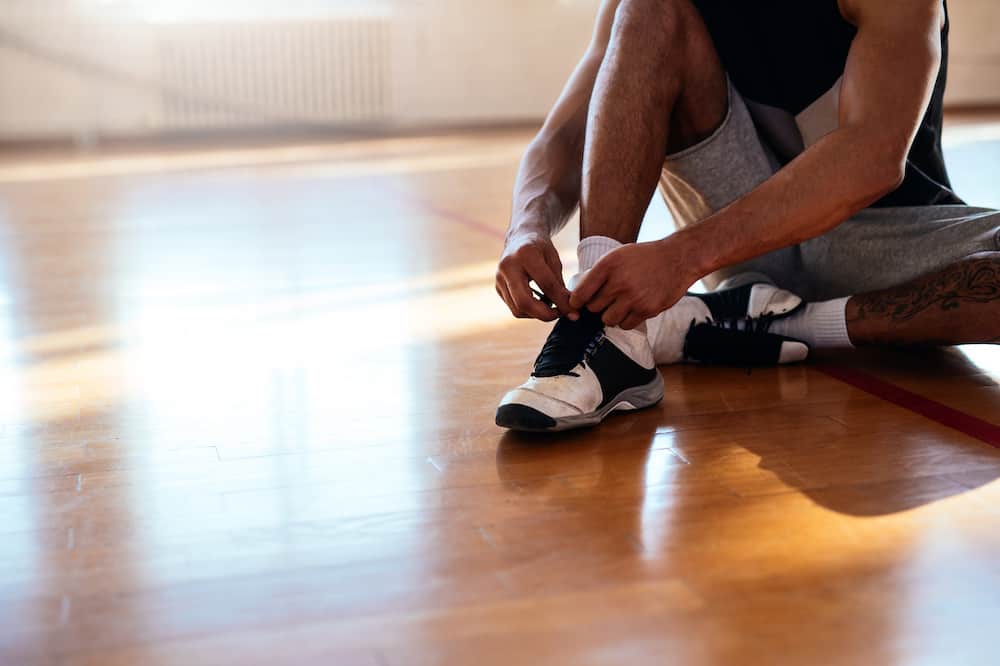











Hey there, I really liked reading through your article. When I went to high school, I’ve always seen people end up in casts after playing soccer or other physically active sports that involve the legs. This gave me a lot of insight onto what my peers might have done to get out of their leg cast so thanks for this awesome and informative article. Does it really take only 7 weeks for a leg injury to heal?
Hello, Gabriel J, and thank you.
Thank you for your kind words.
Great to hear about your benefit of the article too.
Seven weeks is not unrealistic. But of course, types of injuries are different, so that it can be some difference.
Don’t hesitate to contact me if I can help you with anything else or if you have any questions.
Thank you for this great post about transitioning from a walking boot. I had no idea that it takes 6 weeks to transition out of it. Your recommendations of taking it off in increments over a 6 week period is a good one. I’ve seen too many people take the boot right off and only put it back on when the injury hurts, which, of course, just reinjures the area. This is how damage can become permanent.
Hello, Cynthia, and thank you.
Thank you for your kind words.
Great to hear about your benefit of the article too.
Don’t hesitate to contact me if I can help you with anything else or if you have any questions.
Thank you for this great post; it’s very informative!
I’m currently trying to heal from ankle/foot breaks on the same leg that have involved surgery.
The doctor has told me to start trying to walk with my boot and to start using a brace to walk around with at home in about a month. That’s all the information that I was given.
This article has explained how to even go about this process much more clearly!
Thank you!!
Hi, Jenny Bruton, and thank you.
Thank you for your kind words.
Great to hear about your benefit of the article too.
Don’t hesitate to contact me to help you with anything else or if you have any questions.